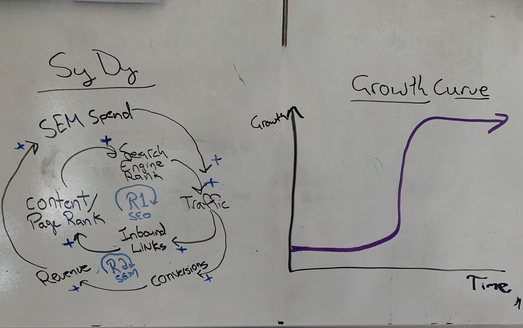Growth at Early-Stage Startups: A Primer
As a Growth practitioner in a startup, your job changes a lot. Here's what to focus on as an early stage company thinking about PLG.
Pieter van Noordennen |

Growth at Early-Stage Startups: A Primer
“PMF. Then Data. Then Growth.” —Elena Verna
”In early stage companies, growth is marketing. At later stages, growth is operations.” — Josh Thorens, VP of Growth, Torq
Building and growing a successful startup is an incredibly challenging endeavor. As a product and growth leader who joined a seed-stage, PLG startup, I’ve seen firsthand the impact that a well-executed growth strategy can have on a company’s trajectory.
Developing and executing is a Growth Strategy at an early stage company is a big topic. I’ve put together the following high-level guidance for future founders, CEOs, and Chief People people to better understand what Growth is and how it can help in the early days of a company.
What is Growth?
Growth as a discipline traces its roots the early days of hyper-scaling Internet businesses like Facebook, HubSpot, and Uber. Early growth leads like Deb Liu, Brian Balfour, and Andrew Chen sought to change the way product and marketing interacted, creating a hybrid function that went beyond traditional product frameworks or the classic AARRR marketing funnel to understand and engage users.
There’s been plenty written about Growth and PLG, and if you are interested in learning more, there’s no better place to start than Reforge’s Growth Series introductory class. For this post, I’ll cover some of the core tenants of growth and how they translate into responsibilities in early-stage companies.
Early-Stage Growth Responsibilities
During the early days of a startup, the primary goal is learning through experimentation, rather than focusing on growth or scaling. Treating everything, from initial prototypes to rudimentary market positioning, as hypotheses to be tested can help your startup find product-market fit and ensure it is ready to scale when the time comes.
V1 Growth Strategy and Model Iteration
Having a growth model early on in your company’s history is valuable, as long as you’re willing to change it constantly. In the early days, you’ll have foundational beliefs about your new venture based on your founders’ beliefs, your mission, and your “disruption story.” These can all be formulated into a hypothesis about how you can grow the business. However, your Growth Model will be more of a blueprint than a city map at this stage.
 Our first growth loop at Slim.AI. Memories…
Our first growth loop at Slim.AI. Memories…
For instance, in the early days of Slim.AI, we believed that the responsibility for building and securing cloud-native apps was shifting left and becoming the responsibility of developers. Stemming from that, we asked ourselves how we could win the hearts and minds of developers and bring them along with us in this belief. Our initial growth model focused heavily on “content & community” by enlisting our engineers to provide content for our website, starting a Twitch stream to learn and teach, and seeking out adjacent communities with similar values.
V1 Retention Metrics
As a growth practitioner in an early-stage company, you should focus on retention metrics. You may not have the suite of product features to support viral adoption just yet, but don’t be seduced by the false promises of scaling acquisition early on. Instead, talk to as many early adopters as possible and focus on understanding their pain points and how your product or concept might solve them.
Developing your first retention metrics will involve some debate, but these conversations can help create alignment on your foundational product vision and give you a framework for discussing what’s coming next.
Experimentation Infrastructure
While you won’t be able to run large-scale A/B tests in the early stages of your startup, you can still build the foundation for your experimentation infrastructure. Start by conducting simple tests in areas like email, social media, paid ads, and community touch-points. The data you generate will lead to healthy, constructive conversations within your organization.
As you execute your first experiments, develop a roadmap for tools and technologies that will support your growth efforts. Start with basic systems, and gradually implement more sophisticated tools as your user base and needs grow.
Conclusion
Growth is a relatively new practice that is gaining momentum in organizations of all sizes, and it will take time, thought, and experimentation for startups to effectively leverage it in the best way possible.
The suggestions provided above offer valuable insights to enhance the understanding of growth in early-stage startups. In future articles, I’ll explore these ideas in greater depth, sharing further insights and experiences to guide startup founders, venture capitalists, and growth leaders on their journey towards building successful businesses.
Keep an eye out for these upcoming articles, and best of luck in building your own growth strategies.
GPT-4 helped with the editing of this document.
